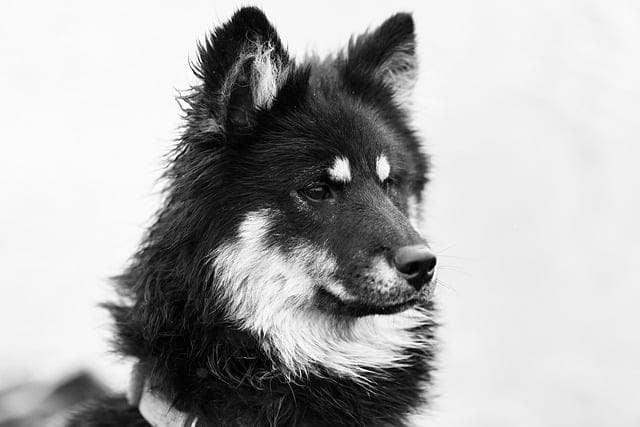Black and white photography is a captivating art form that transcends time and trends. By stripping away color, this genre highlights contrasts, shapes, and emotions, allowing photographers to tell profound stories through their images. In this blog post, we will explore the essence of black and white photos, the impact they have on viewers, and the techniques that black and white photographers use to create stunning black and white portraits of women and families.
Understanding black and white photography is essential for anyone looking to elevate their photography skills. Whether you are a seasoned professional or a beginner, grasping the nuances of black and white photography can significantly enhance your artistic expression. You will learn how to create black and white pictures that resonate emotionally, emphasizing the power of light and shadow.
Furthermore, we will delve into the appeal of black and white portraits, including striking black and white newborn pictures and captivating family photos. With tips on coloring a black and white photo and techniques for creating compelling compositions, this blog aims to inspire you to explore the world of black on white photography and appreciate the artistry involved.
Get ready to discover the beauty of black and white stills and how they can convey complex emotions that color photography often overlooks. By the end of this post, you will have a deeper understanding of the significance of black and white photography in today’s visual culture.
The Timeless Appeal of Black and White Photography
Understanding the Basics
Black and white photography strips away the distraction of color, allowing the viewer to focus on composition, light, and emotion. The use of contrasts is essential in black and white photographs, as it can define shapes and highlight important elements in the frame. Whether it’s a simple black on white photo or a more complex scene, the interplay between light and dark is crucial in crafting impactful images.
The Artistic Process
Creating black and white pictures involves more than just desaturating color photos. Skilled black and white photographers often start with a vision, considering how the absence of color will affect the storytelling in their work. Techniques such as adjusting contrast, exposure, and shadows play a vital role in the final outcome of black and white photographs.
Exploring Different Subjects
Black and white portraits of women often convey depth and emotion that can resonate strongly with viewers. The lack of color emphasizes facial expressions and body language, allowing the subject’s personality to shine through. Similarly, black and white family photos capture precious moments, showcasing the bonds between family members in a timeless way.
Techniques for Capturing Stunning Black and White Photos
Mastering Light and Shadow
Understanding how to manipulate light is key to producing breathtaking black and white photography. Natural light can create beautiful textures and depth in your photos, while artificial lighting can help achieve dramatic effects. Experimenting with different lighting conditions will help you find your unique style in black and white photography.
Post-Processing Tips
Post-processing is where you can truly refine your black and white stills. Programs like Adobe Lightroom and Photoshop offer a range of tools to enhance contrast, brightness, and clarity. Learning how to color a black and white photo selectively can add an interesting twist, drawing attention to specific elements within the image.
Finding Inspiration
Seeking inspiration is crucial for growth as a photographer. Explore the works of renowned black and white photographers and study their styles. Websites like National Geographic and The Guardian often feature stunning photography that can ignite your creative spark.
Historical Context of Black and White Photography
Early Beginnings
The history of black and white photography dates back to the 19th century, with the invention of the daguerreotype in 1839 by Louis Daguerre. This groundbreaking process produced images on polished silver plates, resulting in strikingly detailed black and white photographs. Early photographers faced numerous challenges, including long exposure times and limited sensitivity to light. Yet, these pioneers laid the foundation for future generations of photographers.
The Golden Age
The early to mid-20th century marked the golden age of black and white photography. With the advent of film, photographers like Ansel Adams and Edward Weston mastered the art of black and white composition. Adams, in particular, was known for his breathtaking landscapes and his Zone System, a technique for determining optimal film exposure and development. His work not only showcased the beauty of nature but also elevated black and white photography as a legitimate art form.
The Role of Photojournalism
During the 20th century, black and white photography also found a significant place in photojournalism. Iconic images from events like World War II and the Civil Rights Movement were captured in black and white, conveying powerful emotions and narratives. The stark contrasts and deep shadows in these images added a sense of urgency and gravity, making them unforgettable.
Transition to Digital
With the rise of digital photography in the late 20th century, black and white photography experienced a resurgence. Digital cameras offered unprecedented control over exposure and editing, allowing photographers to experiment with black and white photography in new ways. Software programs provided advanced tools for enhancing black and white images, making it easier than ever to achieve stunning results.
Equipment for Black and White Photography
Choosing the Right Camera
While nearly any camera can capture black and white photos, certain features can enhance the experience. DSLR and mirrorless cameras offer the flexibility of interchangeable lenses and manual settings, allowing you to control your shots more precisely. Additionally, many cameras have a monochrome mode that allows you to preview images in black and white, helping you visualize your compositions better.
Lenses for Black and White Photography
The choice of lens can significantly affect the outcome of your black and white photographs. Wide-angle lenses can capture expansive landscapes, while telephoto lenses are ideal for isolating subjects and compressing distances. Prime lenses often provide sharper images and better low-light performance, making them a popular choice for black and white photography.
Filters and Accessories
Using filters can enhance contrast and mood in black and white photography. A polarizing filter can reduce glare and deepen the sky’s tones, while neutral density filters allow you to use slower shutter speeds for creative effects. Additionally, accessories like reflectors can help control light and shadows in your compositions.
Techniques for Creating Impactful Black and White Portraits
Understanding Composition
Composition is crucial in black and white portraiture. The Rule of Thirds, leading lines, and framing can help create more dynamic and interesting images. Pay attention to the background as well; in black and white photography, even the most subtle textures can contribute to the overall composition.
Capturing Emotion
Black and white portraits excel in conveying emotion. To achieve this, focus on your subject’s expression and body language. Encourage them to relax and interact naturally with the camera. Close-up shots can capture the intricacies of their expressions, while wider shots can tell a broader story about the subject’s environment.
Experimenting with Lighting
Lighting can make or break a black and white portrait. Soft, diffused lighting creates gentle shadows, while harsh lighting can produce dramatic contrasts. Experiment with different lighting setups, including natural light and artificial sources, to discover the best look for your portraits.
The Beauty of Black and White Family Photos
Capturing Moments
Black and white family photos hold a timeless quality that color images often lack. They can capture candid moments, allowing the viewer to focus on the relationships and emotions within the frame. Be prepared to photograph spontaneous interactions, as these candid moments often result in the most cherished images.
Planning Family Portraits
When planning a family portrait session, consider the location, outfits, and overall theme. Simple, uncluttered backgrounds work best in black and white photography, allowing the subjects to shine. Coordinate outfits in complementary colors or patterns to create a cohesive look while ensuring that they do not distract from the subjects.
The Importance of Legacy
Black and white family photos serve as a legacy for future generations. They tell the story of your family’s history, capturing moments that can be cherished and passed down. By investing time in creating beautiful black and white photographs, you are preserving memories that will last a lifetime.
Creative Approaches to Black and White Photography
Abstract Black and White Photography
Exploring abstract black and white photography allows for creativity and experimentation. Focus on shapes, lines, and textures to create visually striking images. Look for patterns in everyday objects, play with light and shadow, and use your imagination to capture unique perspectives.
Street Photography in Black and White
Street photography is a dynamic genre that thrives in black and white. The absence of color can accentuate the rawness of urban life, emphasizing emotion and storytelling. Capture candid moments of everyday life, showcasing the beauty in the mundane.
Landscape Photography
Black and white landscape photography has a timeless quality that can evoke a sense of drama and serenity. Experiment with different compositions and perspectives, paying attention to the relationship between the foreground, middle ground, and background. Use leading lines to guide the viewer’s eye through the image.
Post-Processing Techniques for Black and White Photos
Converting Color Images to Black and White
When converting color images to black and white, use software like Adobe Lightroom or Photoshop. Adjust the individual color channels to control how each color translates into grayscale. This allows you to create images that maintain the desired mood and contrast.
Enhancing Contrast and Clarity
Boosting contrast and clarity can help define your black and white images. Use sliders in post-processing software to fine-tune these aspects, enhancing the visual impact of your photos. Be cautious, however, as excessive contrast can lead to loss of detail in shadows and highlights.
Adding Grain for Texture
Adding grain can impart a classic film-like quality to your black and white images. Use the grain filter in editing software to create a textured effect that evokes nostalgia and adds depth to your black and white photography. This technique can enhance the mood of your images, giving them an artistic and timeless feel.
Dodging and Burning
Dodging and burning are classic techniques used in darkroom printing that can also be applied in digital post-processing. Dodging lightens specific areas of the image, while burning darkens others. This helps to draw attention to key elements in your photographs and can create a more dynamic range of tones. Use these techniques subtly to avoid making the adjustments look artificial.
Using Vignetting
Vignetting, the gradual darkening of the image corners, can help focus the viewer’s attention on the main subject. In black and white photography, vignetting can enhance the mood and depth of the image. However, use it judiciously, as excessive vignetting can distract from the overall composition.
The Role of Black and White Photography in Contemporary Art
Current Trends
In contemporary art, black and white photography continues to thrive as a medium for expression. Many artists choose to work in black and white to explore themes of nostalgia, memory, and identity. The absence of color can create a sense of universality, allowing viewers to interpret images through their lens and experiences.
Influential Black and White Photographers Today
Several modern photographers have made significant contributions to the world of black and white photography. Photographers like Sebastião Salgado, known for his powerful images of social issues and environmental challenges, have used black and white to convey complex narratives. Others, such as Martin Parr, have documented everyday life with a unique perspective, showcasing the beauty in the ordinary through monochrome images.
Black and White Photography in Fashion
The fashion industry has embraced black and white photography for its ability to convey elegance and sophistication. High-contrast black and white images are often used in advertising campaigns, editorial spreads, and runway shows. The timelessness of black and white photography can elevate fashion photography, emphasizing the textures and details of garments while creating a striking visual narrative.
Tips for Beginners in Black and White Photography
Start with Simple Subjects
If you’re new to black and white photography, start by photographing simple subjects. This will help you focus on the fundamentals of composition and lighting without the distraction of color. Look for shapes, lines, and textures that can be emphasized in black and white.
Learn to See in Black and White
Training your eye to see in black and white can take time. Practice by converting color images to black and white and analyzing how different colors translate into grayscale. Pay attention to contrasts, shadows, and highlights in your surroundings, and try to envision how your compositions will look without color.
Take Advantage of Natural Light
Natural light can be your best friend in black and white photography. Early morning and late afternoon provide soft, diffused light that can create beautiful shadows and highlights. Avoid harsh midday sunlight, as it can create stark contrasts that may not be flattering for many subjects.
Experiment and Have Fun
Don’t be afraid to experiment with different techniques and styles. Black and white photography allows for creative expression, so try various approaches and see what resonates with you. Whether you’re capturing street scenes or intimate portraits, the key is to have fun and develop your unique style.
The Emotional Power of Black and White Photography
Conveying Mood and Atmosphere
Black and white photography has a unique ability to convey mood and atmosphere. The lack of color allows viewers to focus on the emotional content of the image, often resulting in a deeper connection with the subject. By playing with light and shadow, you can create dramatic scenes that evoke various feelings, from joy to melancholy.
The Impact of Contrast
High contrast in black and white photography can create a powerful visual impact. Strong differences between light and dark can evoke strong emotions, making the viewer feel something beyond just observing the image. Experimenting with contrast can lead to striking results that leave a lasting impression.
Storytelling Through Images
Every photograph tells a story, and black and white photography can enhance that narrative. The simplicity of monochrome images allows the viewer to focus on the story behind the image without the distraction of color. Consider the emotions and context you want to convey when composing your shots, and use your images to tell compelling stories.
Black and White Photography: A Personal Journey
Finding Your Style
As you delve deeper into black and white photography, take the time to discover your unique style. Experiment with different techniques, subjects, and perspectives. Analyze the work of other photographers and identify elements you admire. Over time, you’ll develop a style that resonates with you and reflects your artistic vision.
Creating a Portfolio
Building a portfolio of your black and white work is an excellent way to showcase your skills and artistic development. Select your best images that highlight your unique style and perspective. Your portfolio can be a valuable tool for gaining clients, participating in exhibitions, or simply sharing your passion with others.
Engaging with the Photography Community
Joining photography groups or online communities can provide valuable feedback and inspiration. Participate in discussions, share your work, and learn from others. Engaging with fellow photographers can help you grow and refine your skills while making meaningful connections in the photography world.
Conclusion
In conclusion, black and white photography is not just a technique; it is an art form that allows photographers to convey emotions and narratives in a unique way. By understanding the principles of light, shadow, and composition, you can create compelling black and white portraits and family photos that leave a lasting impression.
The significance of black and white photography lies in its ability to evoke feelings that color often overshadows. As you delve deeper into this genre, you may find yourself appreciating the artistry involved in each black and white picture you take.
We encourage you to explore the world of black and white photography further, experiment with your own compositions, and share your creations with others. Engaging with this timeless art form can unlock new creative avenues and deepen your connection to the visual storytelling process.






